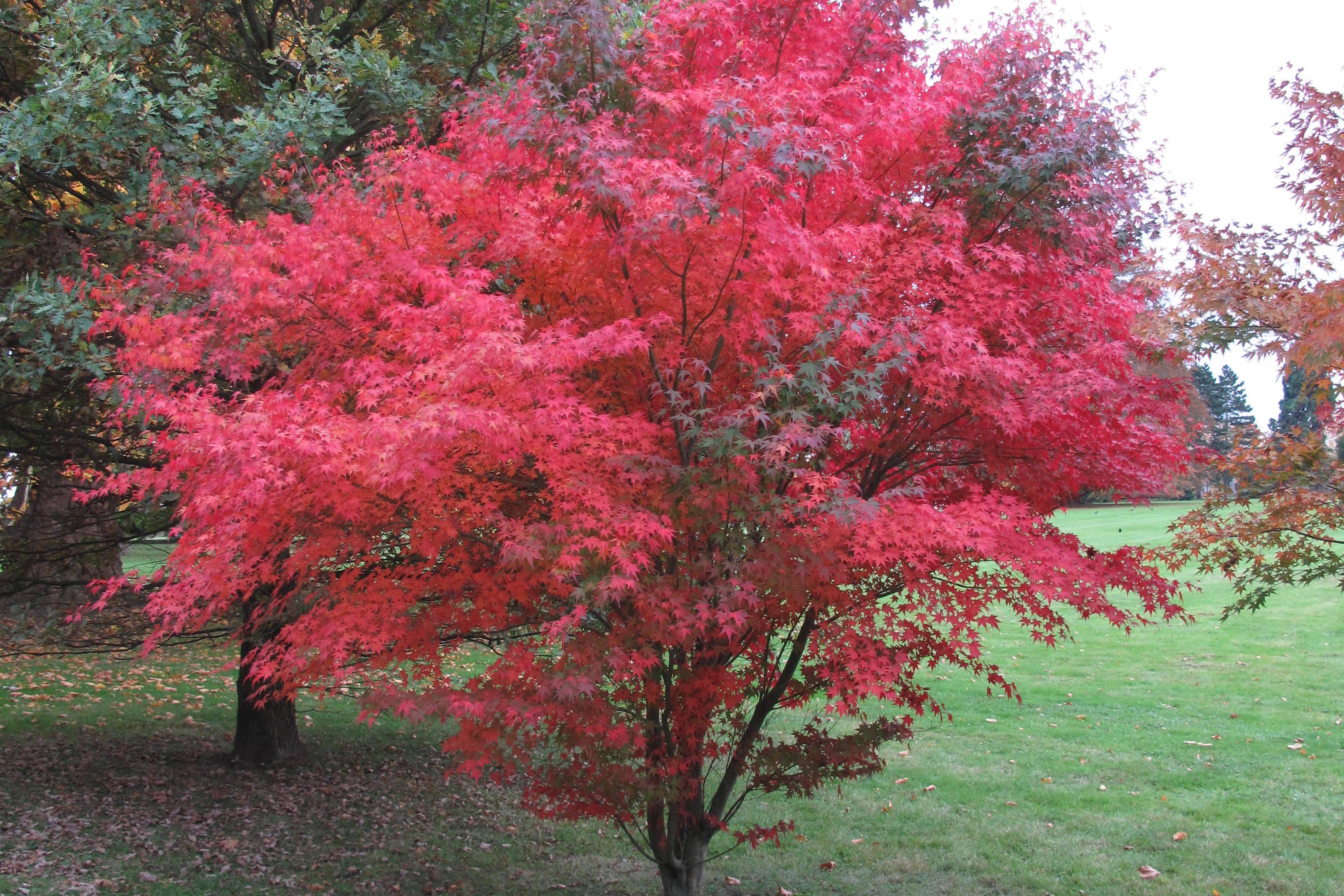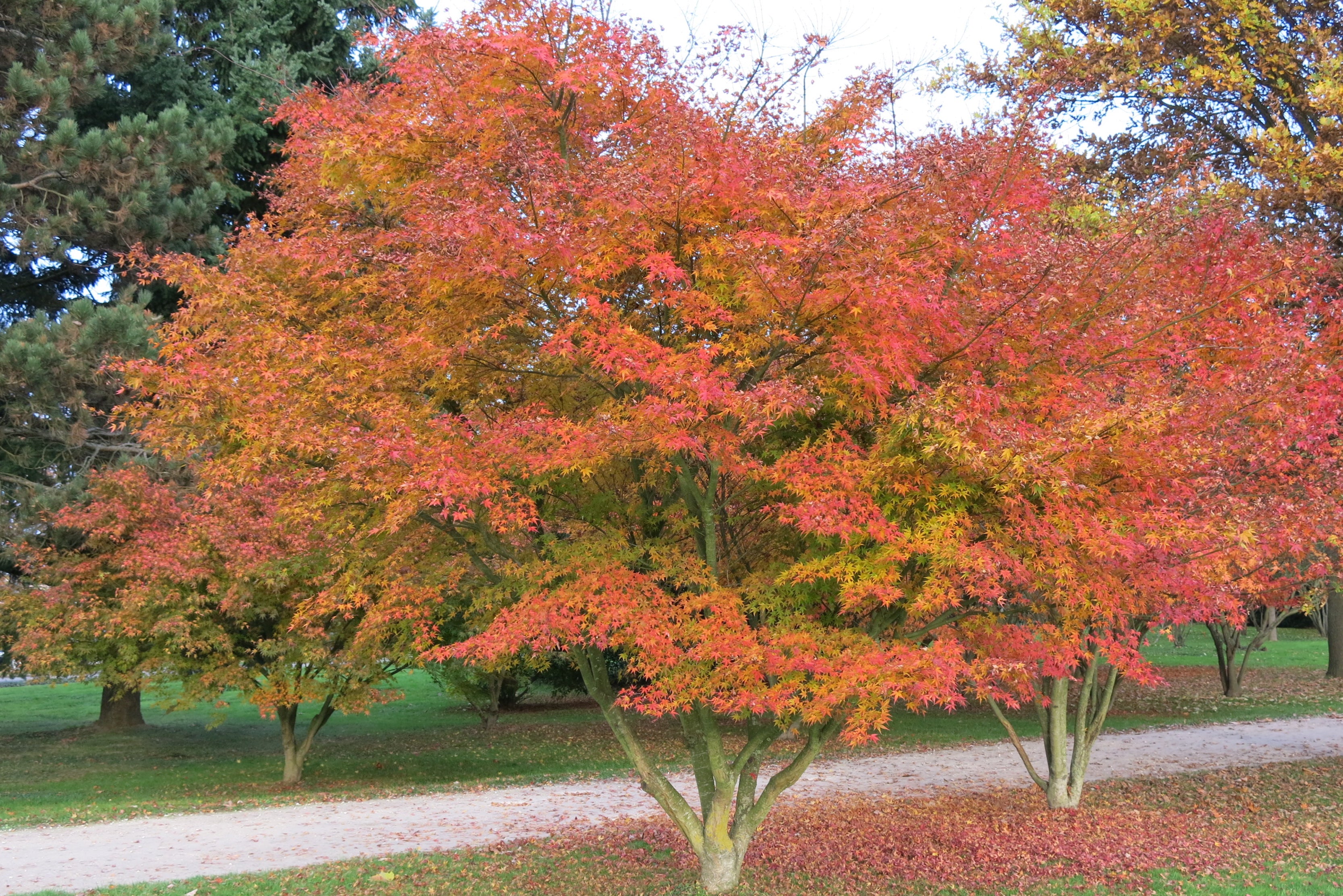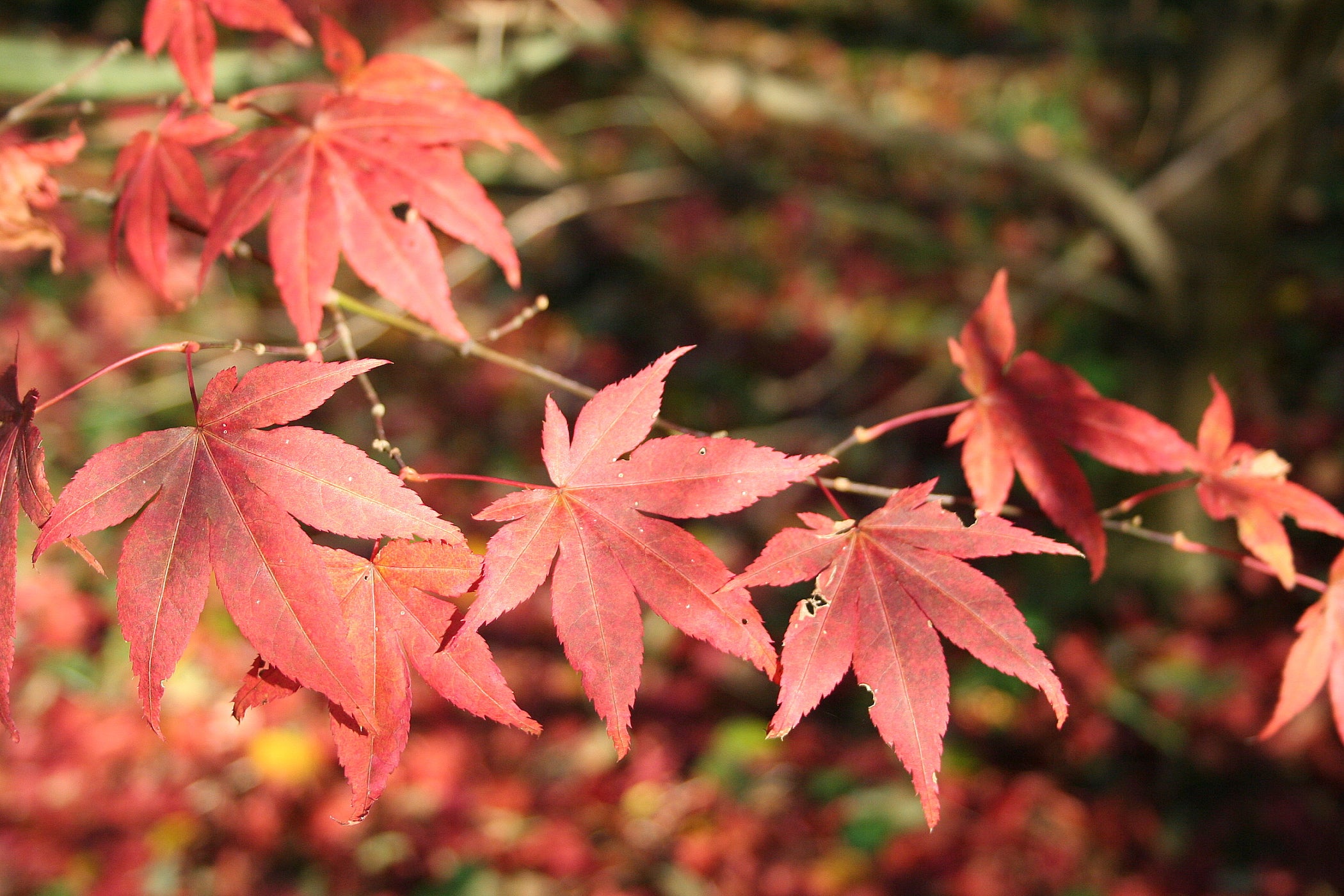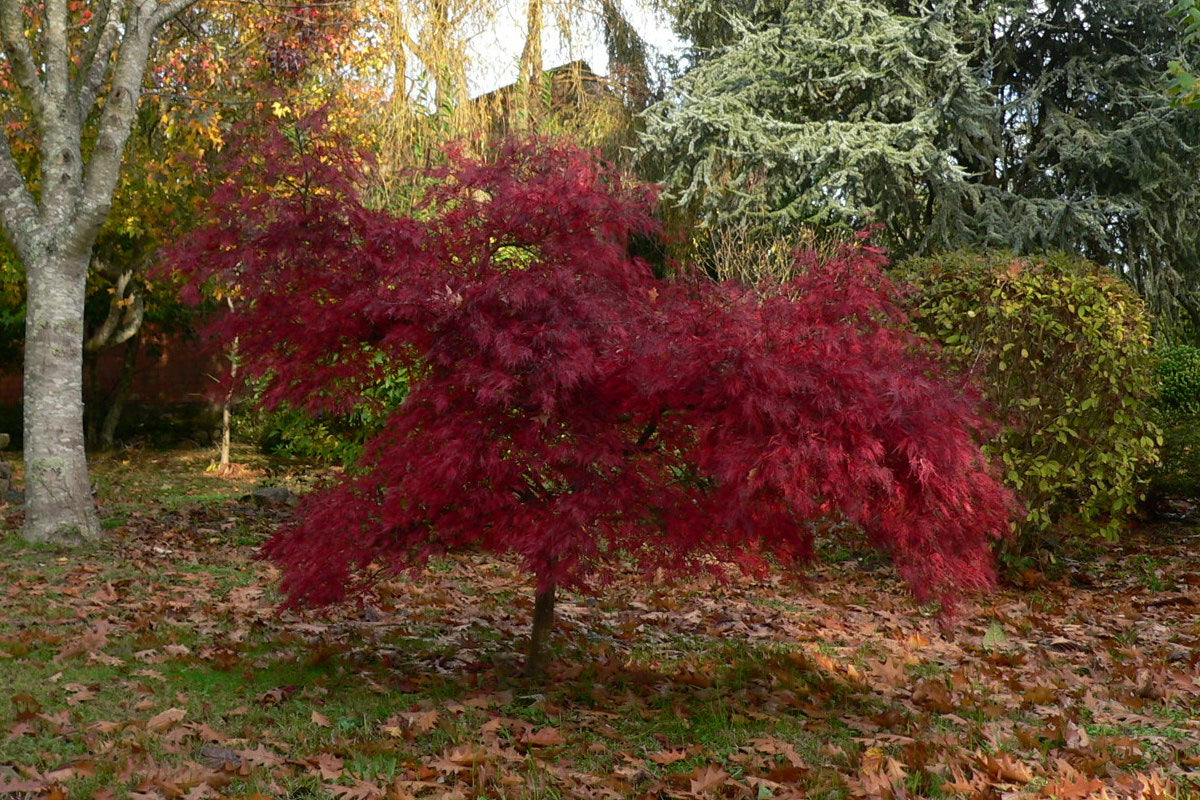Acer palmatum 'Atropurpureum' (A)
Approx. 0.5 litre pot
About this cultivar:
Acer palmatum 'Atropurpureum' (A) is an elegant small tree of beautifully bushy habit, with deep purple leaves divided into about 7 lobes, and becoming a ravishing ruddy red in autumn. They often dry out orange before falling. Inconspicuous red-purple flowers in spring may be followed by winged, purple fruits.
I believe 'Atropurpureum' is all old Japanese cultivar introduced to the western world in the 1850s - and still popular!
The species, palmatum, has been cultivated in Japan for centuries and in temperate areas around the world since the 1800s. The first specimen of the tree reached Britain in 1820.
When Swedish doctor-botanist Carl Peter Thunberg traveled in Japan late in the eighteenth century, he produced drawings of a small tree that would eventually become synonymous with the high art of oriental gardens. He gave it the species name palmatum after the hand-like shape of its leaves, similar to the centuries-old Japanese names kaede and momiji, references to the 'hands' of frogs and babies, respectively.
Japanese horticulturalists have long developed cultivars from palmatum and other types found in Japan and nearby Korea and China. They are a popular choice for bonsai enthusiasts (if pruned!) and have long been a subject in art, but these days they appear all in all types of gardens all over the world.
- Position: Full sun, partial shade
- Soil: Almost any soil, grows well in Ballyrobert
- Flowers: April, May, June
- Other features: Grows well in Ballyrobert
- Hardiness: Fully hardy, grows well in Ballyrobert, H6 - Hardy in all of UK and northern Europe (-20 to -15°C)
- Habit: Clump forming, bushy
- Foliage: Deciduous
- Height: 200 - 800 cm (6.5 - 26 ft) Prune!
- Spread: 200 - 800 cm (6.5 - 26 ft) Prune!
- Time to full growth: 20 to 50 years
- Plant type: Herbaceous Perennial, shrub, tree
- Colour: Green, purple, red
- Goes well with: Clematis
About this genus:
Acer is a genus of trees and shrubs commonly known as maples. The genus is placed in the family Sapindaceae (soapberry). There are approximately 128 species of Acer, most of which are native to Asia, with only one species, Acer laurinum, native to the Southern Hemisphere. They usually have easily recognizable palmate leaves and distinctive winged fruits. Their closest relatives are the horse chestnuts. The genus name possibly comes from the Latin acer meaning hard or sharp, the wood once having been used for writing tablets.
Most species are deciduous, and many are renowned for their autumn leaf colour, but a few in southern Asia and the Mediterranean region are evergreen. The leaf colour is the primary ornamental feature of these plants, and many countries have leaf-watching traditions. For instance, in Japan the custom of viewing the changing colour of maples in the autumn is called momijigari. New England also has a whole tourist industry based on their autumn colour, although timing is crucial (I know from painful experience!). Though some cultivars are also grown for their interesting bark.
Maple flowers are green, yellow, orange, or red. Though individually small, the effect of an entire tree in flower can be striking in several species. Some maples are an early spring source of pollen and nectar for bees. The distinctive fruits are variously called samaras, maple keys, helicopters, whirlybirds, or polynoses. They are shaped to spin as they fall and to carry the seeds a considerable distance on the wind. During World War II, the US Army developed a special airdrop supply carrier that was based on the maple seed!
The maple is a common symbol of strength and endurance and has been chosen as the national tree of Canada. The design on the flag is an eleven-point stylization modelled after a sugar maple leaf (which normally bears 23 points if we want to be pedantic).
Most maples are large trees and others are smaller shrubs. The latter are the ones we will usually, but not always, be talking about! These smaller types have been bred and grown in gardens (especially in Japan) for centuries because they are beautifully intricate, architectural, slow growing, and provide many colour and texture options. Thus, they are seen as ideal for gardens large and small.
Most Acer are shade-tolerant when young and are often understory, or pioneer species rather than climax overstory trees. There are a few exceptions such as sugar maple. Many of the root systems are typically dense and fibrous, inhibiting the growth of other vegetation underneath them. All well and good, but what does that mean for the ones we’ll be growing in our gardens? Well, they tend to be easy to grow in the British Isles, but they are not fond of strong winds or spring frosts. They are not fond of full sun either, but full sun doesn’t really exist in the British Isles does it? Else Easyjet wouldn’t exist. Maybe it exists in Kent?
As usual, not too wet and not too dry, but the more mature the plant the more they can withstand bogs/deserts.








